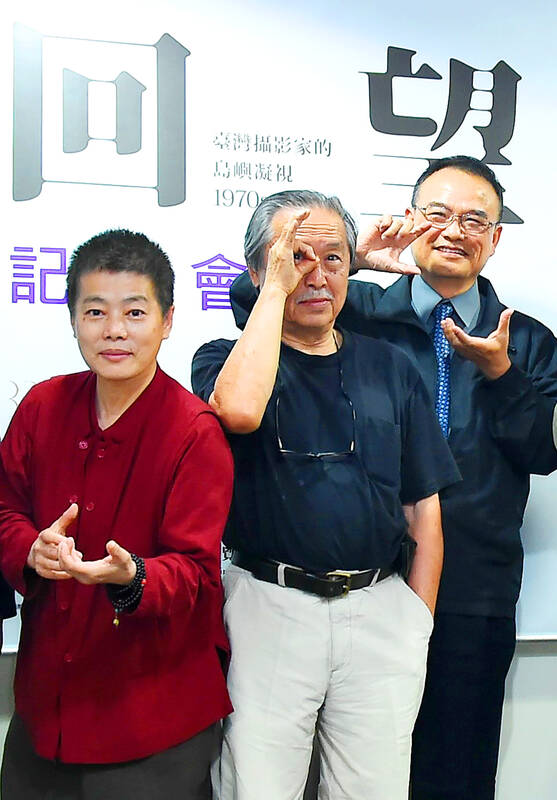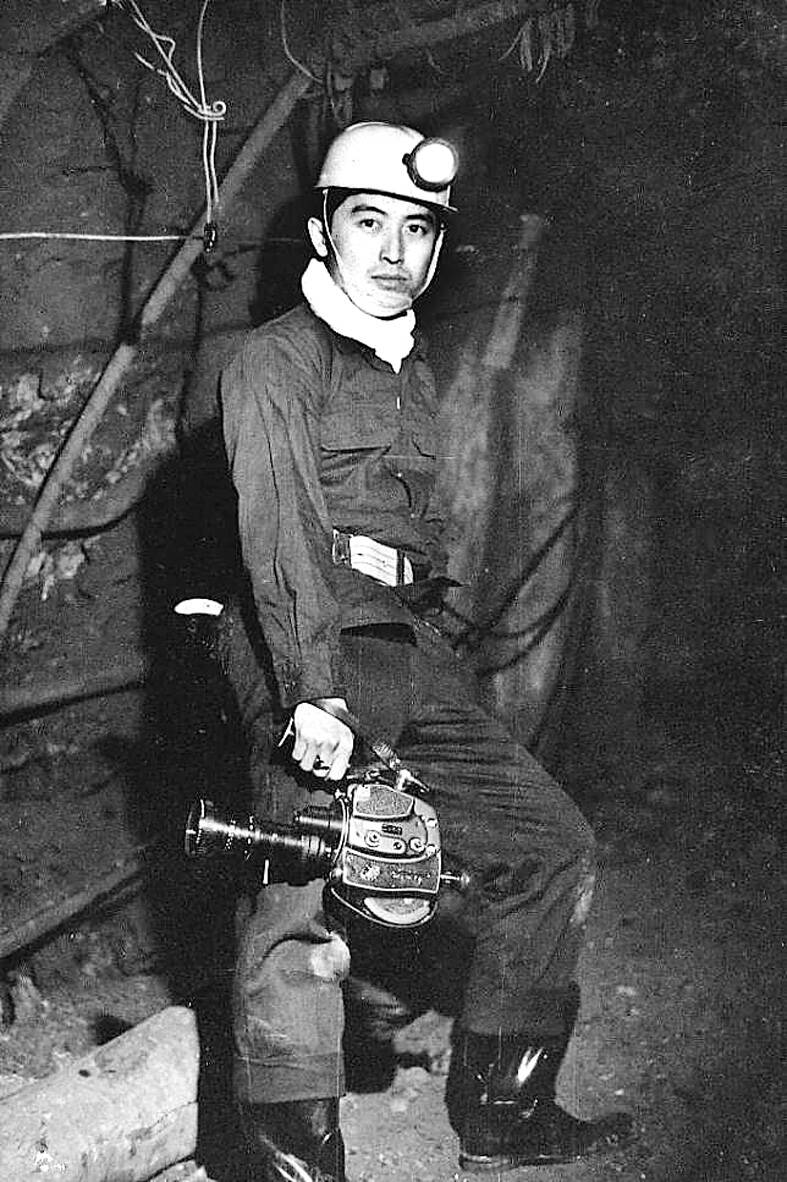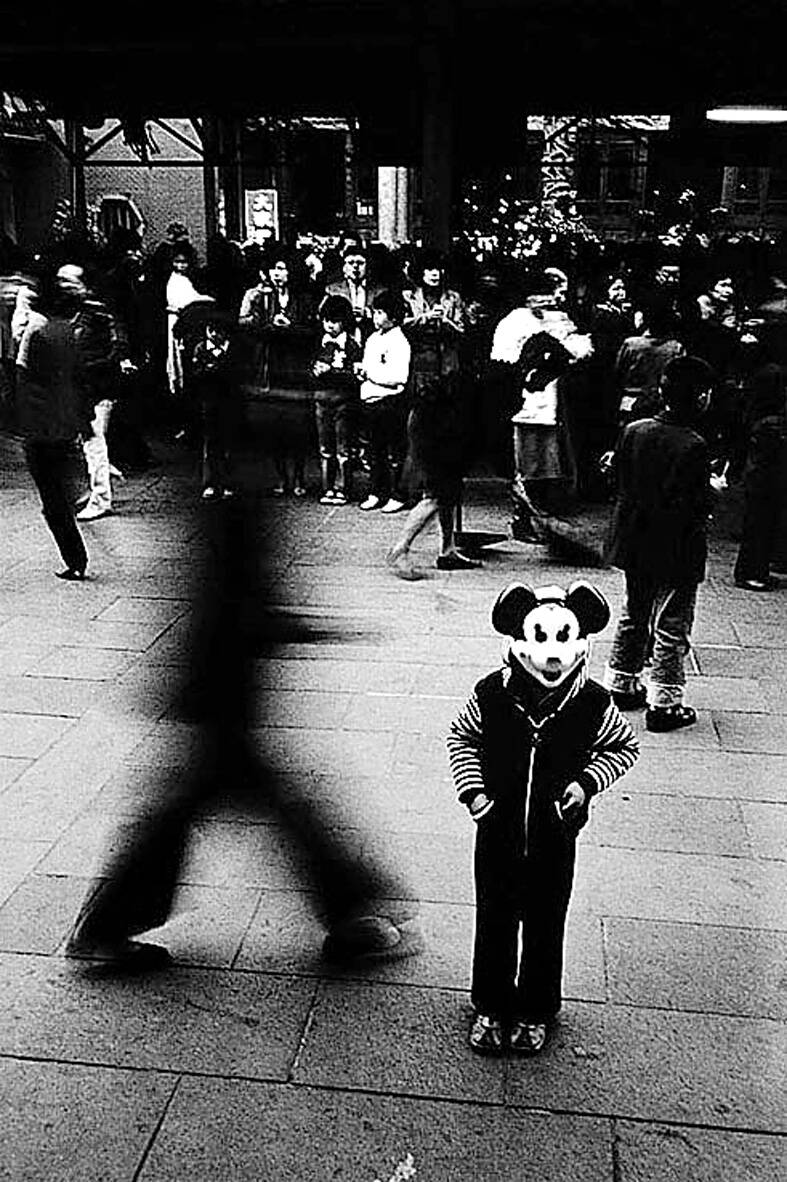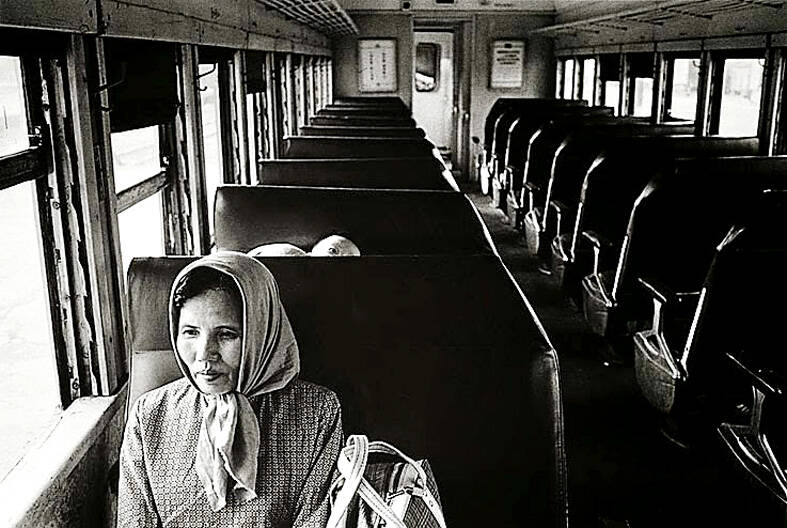Renowned Taiwanese photographer and filmmaker Chang Chao-tang passed away on April 2, aged 81. He was a key figure in the development of Taiwan’s modern photography, and winner of prestigious awards such as the Golden Bell Award, the Golden Horse Award, the National Award for Arts and the National Cultural Award. In 2022, Chang received the Lifetime Achievement Award at the Golden Horse Film Festival.
Minister of Culture Shih Che said that Chang, who devoted himself to photography, television, film, documentary and experimental film, created a new realm for Taiwan’s image art with his experimental, documentary and reportage works, and the Ministry of Culture will make a recommendation for a presidential citation.
Born in Banqiao in 1943, Chang’s journey of exploring images started from a camera borrowed from his elder brother. In a high school photography club, he studied with Cheng Shang-hsi, one of the first documentary photography artists in Taiwan.

Photo: Hu Shun-hsiang, Liberty Times 照片:自由時報記者胡舜翔
In 1960, Chang entered National Taiwan University’s Department of Civil Engineering, but was heavily involved in literature and art. Surrealism, existentialism and modernism inspired his experimental photography. His unique photographic images shaped up the post-war Taiwanese image language.
Each of Chang’s photographs includes the location and date, which not only makes it a record, but also connects it to a place. He said: “What I am looking for is not a scene, but an atmosphere. What I am waiting for is a state, which may be to present the vast silence and emptiness, or to convey subtle expectation and imagination, or to wait for another commotion of energy about to erupt.”
Chang, who is also a pioneer of experimental film in Taiwan, devoted himself to documentary and video work over the years. His works, such as TV documentaries The Homecoming Pilgrimage of Dajia Mazu (1974), Wang-ye Boat Ceremony (1979), The Journey of Image (1981-1982) and experimental films like Face in Motion (1976), stand as the iconic works of Taiwanese experimental films and documentary. His Chen Family Abode in Xiushui, Changhua (aka Gu Cuo /The Old House, 1980) earned him Golden Horse Award for Best Documentary and Best Documentary Photography.

Photo courtesy of Taiwan Film & Audiovisual Institute 照片:國家電影及視聽文化中心提供
As a cinematographer, his works China Behind (1973), Woman of Wrath (1984) and films such as The Glamorous Boys of Tang (1985) and Last Train to Tanshui (1986) made him one of the pioneers in Taiwan cinema.
Despite working in television companies, which were public institutions, during the martial law period, Chang boldly reached out for sensitive or controversial issues such as the 228 Incident, the Hsichih Trio murder case and nuclear waste, as well as expressing compassion for vulnerable groups such as homosexuals, drug-addicted teenagers and indigenous peoples, which caused quite a stir at the time.
He was also committed to compiling the history of Taiwanese photography. In Search of Photos Past: The Development of Photographic Realism on Taiwan (1988), which he edited, systematically surveyed 33 Taiwanese photography forerunners. He also promoted the establishment of the biennial Taiwan International Documentary Festival (TIDF), which was launched in 1998.

Photo courtesy of Chang Chao-tang’s Blog 照片:張照堂部落格「新哆啦老師的又一天」
Chang’s influence on Taiwanese image art is diverse and comprehensive. Having taught at the Tainan National University of the Arts for many years, he was deeply involved in imaging education. Filmmakers including Chung Mong-hong, Christopher Doyle, Yang Li-Chou, Tsai Tsung-lung, Huang Hsin-yao and Wu Yao-tung, among others, were influenced by him.
Photographers Ho Ching-tai and Liu Chen-hsiang said that Chang was the most influential teacher on Taiwan’s photography today, having inspired generations of image artists.
(Lin Lee-kai, Taipei Times)

Photo courtesy of Chang Chao-tang’s Blog 照片:張照堂部落格「新哆啦老師的又一天」
臺灣攝影及影像藝術巨擘張照堂4月2日過世,享壽81歲。他是推動台灣攝影現代性發展的關鍵人物,曾獲金鐘獎、金馬獎、國家文藝獎、行政院文化獎等重要獎項,並於2022年獲金馬獎終身成就獎。
文化部長史哲表示,張照堂投身攝影、電視、電影、紀錄片、實驗電影等多元影像藝術創作領域,以實驗性、紀錄性及報導性作品特色,為臺灣影像藝術開創嶄新境界,文化部將呈請總統明令褒揚。
1943年出生於板橋的張照堂,攝影啟蒙於借自兄長的相機。高中時在攝影社與前輩攝影家鄭桑溪學習,開始其影像探索之旅。

Photo courtesy of Chang Chao-tang’s Blog 照片:張照堂部落格「新哆啦老師的又一天」
1960年,張照堂進入臺大土木工程系就讀,卻傾心文學與藝術,超現實主義、存在主義與現代主義思潮啟發了他實驗性的攝影創作。他獨特的攝影圖像,建立了戰後臺灣風格影像語言。
張照堂的每張照片均以地點和日期命名,既帶有日記性質,同時連結地域。他曾自述:「我尋找的不是風景,而是一種氛圍。我等待的是一種狀態,這樣的狀態,或許想呈現廣漠的安靜與空無,或許想傳達微妙的想像期待,或許是等待另一種呼之欲出的能量騷動」。
張照堂亦為臺灣實驗電影先驅,長年投入紀錄片及影像工作,其作品如電視紀錄片《大甲媽祖回娘家》(1974)、《王船祭典》(1979)、《映象之旅》(1981-1982),實驗影片《剎那間容顏》(1976),現今被譽為台灣實驗片與紀錄片經典,更曾以《古厝》(1980)獲得金馬獎最佳紀錄片與紀錄片攝影。
他也是電影攝影師,作品包括《再見中國》(1973)、《殺夫》(1984),以及《唐朝綺麗男》(1985)、《淡水最後列車》(1986)等電影,是台灣電影的重要前輩。
張照堂雖在戒嚴時期進入體制內工作,任職電視公司,但他卻大膽觸碰二二八事件、蘇建和案、核能廢料等敏感或爭議議題,也關懷同性戀、吸毒少年、原住民等弱勢族群,在當時引起極大震撼。
他也致力整理台灣攝影史,例如主編《影像的追尋:台灣攝影家寫實風貌》(1988),系統性介紹33位臺灣攝影前輩。1998年也推動創立台灣國際紀錄片雙年展。
張照堂對臺灣影像藝術的影響多元且全面。他長期任教國立台南藝術大學,深耕影像教育,包含鍾孟宏、杜可風、楊力州、蔡崇隆、黃信堯、吳耀東等導演都受其影響。
攝影家何經泰及劉振祥認為,張照堂是對現今台灣攝影圈影響最大的老師,影響了一整個世代的後進影像工作者。
(台北時報林俐凱)

What comes to mind when you think of a “mermaid”? For some, it may simply be a mythical creature, but being a professional mermaid is a real and fascinating career. This unique job not only involves creativity but also demands dedication and skill. Professional mermaids amaze audiences with breathtaking underwater performances. Whether they are gracefully swimming alongside marine creatures or educating spectators about manatee ecology, their movements evoke a sense of magic and wonder. But their work doesn’t stop there. Many mermaids engage directly with visitors, taking memorable photos or guiding them through unique experiences, such as “mermaid for

A: A mint Labubu doll was sold for a record 1.08 million Chinese yuan — or about US$150,300 — at an auction. B: That much for a doll? That’s insane. A: The character of toy company Pop Mart has sparked a global frenzy thanks to celebrity endorsements, like pop diva Rihanna and Blackpink member Lisa. B: Where can we admire all the Pop Mart dolls? A: The world’s third Pop Mart flagship store is located in Taipei’s Ximending area. Let’s go together. A: 一個薄荷色的「拉布布」玩偶在拍賣會上,拍出108萬人民幣天價、高達15萬美元! B: 一個玩偶?這也太瘋狂啦。 A: 這個泡泡瑪特玩具公司旗下的角色正在全球掀起狂熱,而這都要感謝天后蕾哈娜、Blackpink的Lisa等名人的加持。 B: 哪裡可以看到泡泡瑪特推出的公仔啊? A: 全球第三家泡泡瑪特旗艦店就在台北西門町,我們去逛逛吧。 (By Eddy Chang, Taipei Times/台北時報張迪)

A: What are some of the hottest auction items other than the Labubu doll? B: NBA player Stephen Curry’s basketball card, actress Jane Birkin’s Hermes “Birkin bag,” and Princess Diana’s dresses also attracted robust bidding recently. A: How much can a trading card cost? B: Curry’s Paris Olympics autograph card was sold for US$518,500, or NT$15.3 million. A: Wow, it broke the record held by MLB superstar Shohei Ohtani’s baseball card. That’s amazing. A: 除了 「拉布布」玩偶以外,還有哪些熱門拍賣品? B: NBA球星史蒂芬柯瑞的球卡、女星珍柏金的原版愛馬仕「柏金包」、戴安娜王妃的禮服最近都引發競標。 A: 一張卡片能有多貴啊? B: 哈這張印著柯瑞在巴黎奧運的簽名卡,拍出51萬多美元天價、高達台幣1,530萬! A: 哇他打破了MLB球星大谷翔平球卡的紀錄,真是令人驚奇。 (By Eddy Chang, Taipei Times/台北時報張迪)

The traditional five-day workweek was introduced around a century ago and has since become the standard, along with punching in at 9am and leaving at 5pm. Recently, however, challenges to this formula have been increasing, particularly among young people. In the UK, 200 British companies have changed gears and decided to adopt a permanent four-day workweek for their employees. The new schedule will not cause any loss in pay, which is expected to result in greater employee satisfaction. Among those leading the charge for the new model are charities, marketing firms, and technology companies. Advocates of the policy say